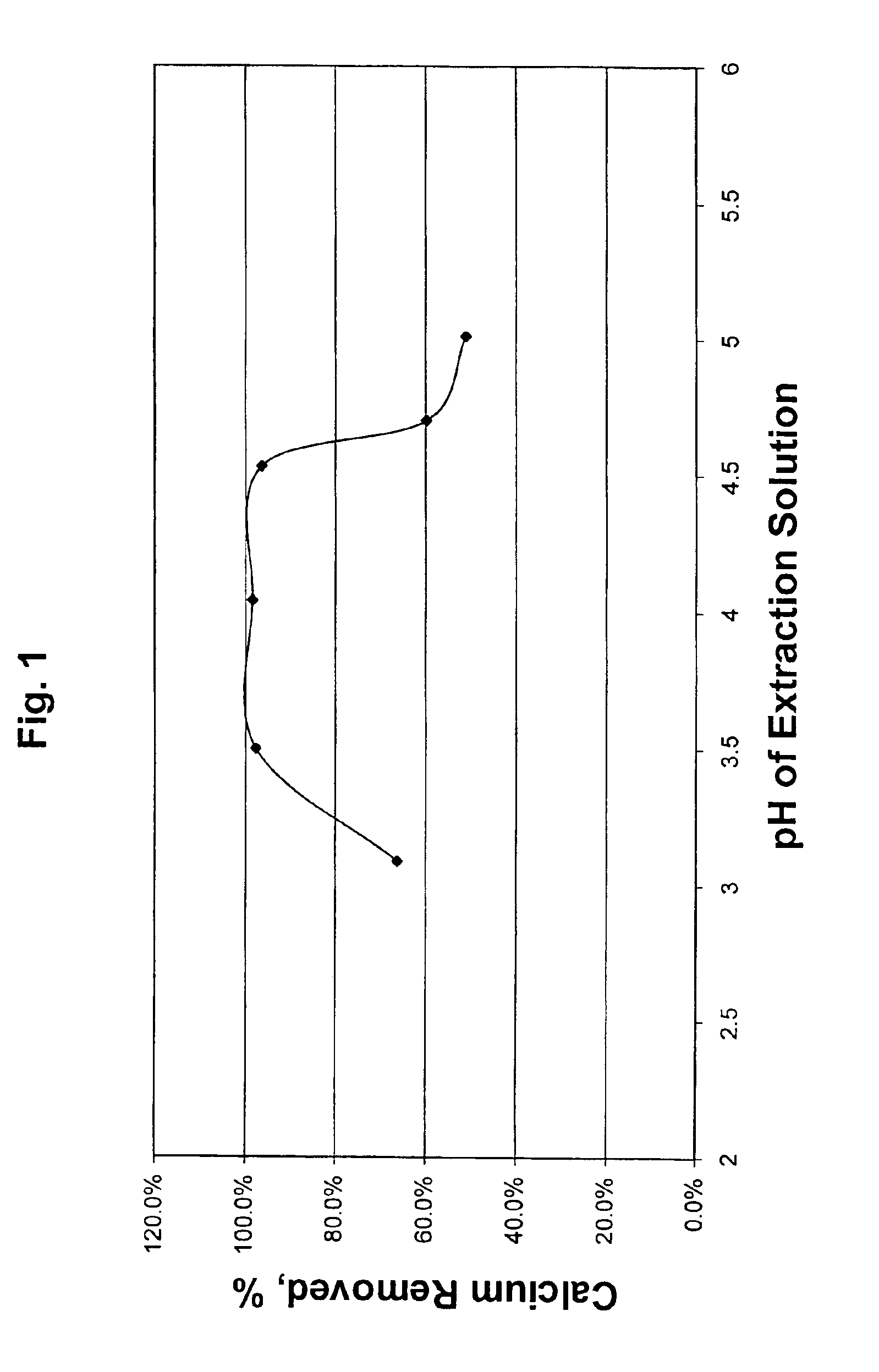Method for removing calcium from crude oil
a crude oil and calcium technology, applied in the petroleum industry, refining with metals, oxygen compounds, etc., can solve the problems of easy dissociation or removal, rapid fouling or deactivation of catalysts in catalytic operations, and difficult process using conventional refining techniques, etc., to facilitate the decomposition of calcium-containing components, facilitate the process, and facilitate the effect of calcium ions transpor
- Summary
- Abstract
- Description
- Claims
- Application Information
AI Technical Summary
Benefits of technology
Problems solved by technology
Method used
Image
Examples
example 1
[0029]Eight (8) grams of distilled water were combined with 0.5 grams of a 1.0 N solution of acetic acid in an 8-dram vial. Sufficient ammonia solution (NH4OH) was added to the acidified solution to yield a pH of 4.04 (Test No. 1A). This extraction solution was then combined in the same vial with 10 grams of a calcium-containing crude oil as detailed above. ICP analysis showed that 98.4% of the calcium had been removed from the crude oil.
example 2
[0030]Example 1 was repeated at a number of target pH values in Test Nos. 1B-1F. Results for Examples 1 and 2 are tabulated in Table I. The effect of pH of the extraction solution on calcium removal is also illustrated in FIG. 1. FIG. 1 clearly shows the surprisingly high amount of calcium which is removed over the pH range of from 3.0 to 5.0 of this invention.
[0031]
TABLE IEffect of pH on calcium removal from crude oil #1InitialCalciumTest No.DescriptionpHRemoval, %1A0.05 N Acetic + NH4OH4.0498.4%1B0.05 N Acetic + NH4OH3.5097.7%1C0.05 N Acetic + NH4OH5.0151.0%1D0.05 N Acetic + NH4OH4.5396.3%1E0.05 N Acetic + NH4OH4.7059.7%1F0.05 N Acetic Acid3.0966.2%
example 3
[0032]The effect of changing the type of acid is illustrated in the data from Test Nos. 2A through 2C of Table II. At an equivalent acid strength, acetic acid and oxalic acid removed the calcium contained in the crude sample more effectively than did sulfuric acid. However, it should be noted that the calcium recovery when using oxalic acid was low. It is believed that oxalic acid produced an insoluble phase with the calcium impurity in the crude. This insoluble precipitate is more difficult to remove during continuous processing than is soluble calcium that is retained in the aqueous phase.
[0033]
TABLE IIEffect of acid type w / crude #1InitialCalciumTest No.DescriptionpHRemoval, %2A0.05 N Sulfuric + NH4OH4.4323.9%2B0.05 N Acetic + NH4OH4.0498.4%2C0.05 N Oxalic + NH4OH4.0375.5%
PUM
| Property | Measurement | Unit |
|---|---|---|
| temperature | aaaaa | aaaaa |
| temperature | aaaaa | aaaaa |
| temperature | aaaaa | aaaaa |
Abstract
Description
Claims
Application Information
 Login to View More
Login to View More - R&D
- Intellectual Property
- Life Sciences
- Materials
- Tech Scout
- Unparalleled Data Quality
- Higher Quality Content
- 60% Fewer Hallucinations
Browse by: Latest US Patents, China's latest patents, Technical Efficacy Thesaurus, Application Domain, Technology Topic, Popular Technical Reports.
© 2025 PatSnap. All rights reserved.Legal|Privacy policy|Modern Slavery Act Transparency Statement|Sitemap|About US| Contact US: help@patsnap.com


